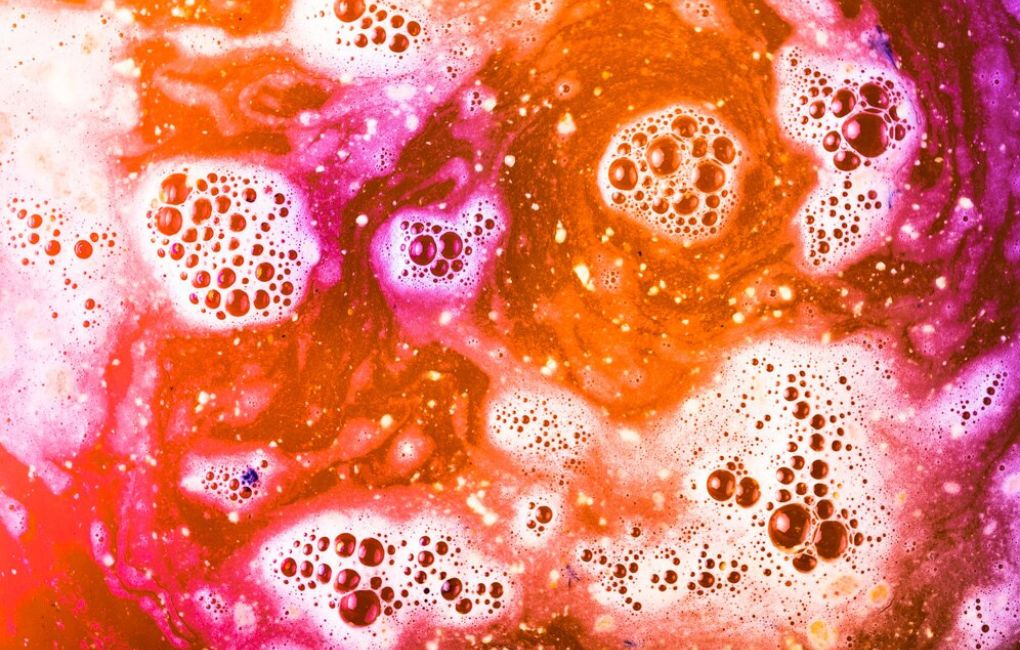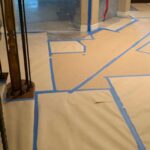Orange mold can be a persistent and worrisome problem in residential and commercial spaces. This particular type of mold, characterized by its vibrant orange color, thrives in damp and humid environments, making homes and offices susceptible to its growth. However, with the right approach and professional assistance, orange mold can be effectively removed, ensuring a safe and healthy living or working environment.
Expert mold remediation services employ specialized techniques and equipment to eradicate the mold, addressing both the visible signs and potential hidden growth. By employing thorough cleaning, proper ventilation, and moisture control measures, you can restore the affected areas and provide valuable guidance on preventing future mold infestations.
What is Orange Mold?
The vibrant splash of orange in your bathroom or on your wood furniture might not be the cheerful pop of color you were hoping for. Orange mold, a type of fungus, can thrive in these damp environments, posing potential health risks and causing structural damage. But fear not, vanquishing this unwanted guest is within reach.
Mold thrives in damp, poorly ventilated areas, making bathrooms and wood prone to its invasion. Leaky pipes, poor ventilation, condensation, and even regular showering can create the perfect moldy haven.
Varieties of Orange Mold
Orange mold comes in various shades, from a bright tangerine to rusty ochre. Its texture can be slimy, fuzzy, or even resemble coral. Some common types of orange mold found in bathrooms and on wood include:
Bissochlamydia: Often dubbed “bath slime,” it typically grows on shower curtains, grout, and tiles.
Aureobasidium: This mold favors wood, particularly in attics and basements, and appears as orange or pinkish patches.
Trichoderma: While it can be beneficial for composting, Trichoderma can also invade wood and drywall, showing up as orange, green, or white patches.
Identifying the Source of Orange Mold
Orange mold can be unsightly and, if left unaddressed, may pose health risks. Understanding the source of this mold is crucial for effective removal and prevention. Here’s a guide to help you identify the origin of orange mold in showers and on wood surfaces:
Shower Environments
Check for Leaks: Inspect your shower area for any water leaks. Leaky faucets, pipes, or a compromised shower enclosure can create a moist environment conducive to mold growth.
Examine Grout and Caulk: Mold often thrives in the porous surfaces of grout and caulk. Inspect these areas for discoloration or signs of wear and tear.
Ventilation Issues: Poor ventilation can contribute to mold growth. Ensure your bathroom is adequately ventilated, and consider using exhaust fans to reduce humidity.
Wooden Surfaces
Moisture Content: Excess moisture is a primary factor for mold growth on wood. Identify sources of moisture, such as leaks or high humidity levels, that may be affecting wooden structures.
Outdoor Exposure: Wooden surfaces exposed to outdoor elements, like decks or window frames, are susceptible to mold. Regularly inspect and treat these areas, especially in damp climates.
Water Damage: Check for any previous water damage on wooden surfaces. This may include areas with a history of leaks or wood that has not been adequately sealed.
Common Factors Contributing to Mold Growth
High Humidity: Mold thrives in humid conditions. Both showers and poorly-ventilated wooden spaces can become breeding grounds for mold if humidity levels are consistently high.
Lack of Ventilation: Inadequate ventilation traps moisture, creating an environment where mold can flourish. Ensure that bathrooms and enclosed wooden spaces have proper airflow.
Organic Materials: Mold feeds on organic materials. In showers, soap scum and organic residues provide a food source. On wood, the mold may consume the wood itself or any organic substances present.
Warm Temperatures: Mold tends to grow in warmer temperatures. Check for areas where warmth and moisture coincide, providing an ideal environment for mold growth.
How to Get Rid of Orange Mold in Shower: Step by Step Removal Process
Addressing orange mold in your shower requires a systematic approach to ensure thorough removal. Follow these step-by-step instructions for an effective cleanup:
Safety First
Start the mold removal process by putting on protective gear like gloves and a mask to avoid contact with mold spores, which can be harmful. Ensure good ventilation in the bathroom by opening windows or using an exhaust fan. This helps disperse any airborne spores and keeps the air fresh. Prioritizing safety and ventilation sets the stage for an effective and safe mold cleanup in your bathroom.
Remove Shower Curtains
Remove shower curtains if present and machine-wash them separately using hot water and a detergent designed to kill mold. This thorough cleaning helps eliminate any mold spores and stains on the curtains. If the curtains are severely affected, consider replacing them to ensure a mold-free and hygienic shower environment. Regular maintenance of shower curtains is essential to prevent mold recurrence.
Scrubbing Ties and Grout
Create a cleaning solution by mixing equal parts white vinegar and water or hydrogen peroxide. Apply this solution to tiles and grout, especially targeting areas with visible mold growth. Using a stiff brush or an old toothbrush, scrub the surfaces vigorously to remove the mold. This natural cleaning approach helps break down and eliminate mold, leaving your shower tiles and grout refreshed and mold-free.
Cleaning Shower Fixtures
Using the vinegar or hydrogen peroxide solution, wipe down shower fixtures, including faucets and handles. Ensure thorough coverage, paying particular attention to areas where moisture tends to accumulate, as these are prone to mold growth. By cleaning these fixtures, you prevent the buildup of mold in damp spots, promoting a clean and hygienic shower environment. Consistent attention to moisture-prone areas contributes to long-term mold prevention.
Use a Mold-Killing Cleaner
For stubborn mold patches in your shower, use a commercial mold-killing cleaner, following the product instructions carefully. Confirm that the cleaner is suitable for the specific surfaces in your shower to avoid any damage. Apply the cleaner directly to the affected areas, allowing it to penetrate and eliminate the mold. This targeted approach with a specialized cleaner ensures the effective removal of persistent mold, restoring a cleaner and healthier shower space.
Addressing Shower Caulk
Inspect the caulking in your shower for signs of mold. If you find mold, remove the affected caulk and replace it with a mold-resistant product. Make sure the area is completely dry before applying the new caulk to prevent future mold growth. This proactive approach to maintaining mold-resistant caulking contributes to a long-lasting and hygienic shower environment. Regular checks and timely replacements help keep mold at bay.
Rinse and Dry
After cleaning to remove mold, rinse all shower surfaces thoroughly with clean water to eliminate any cleaning residues. This step ensures that no leftover cleaning agents remain on the surfaces. Following the rinse, dry the entire shower completely to prevent the return of moisture, which could contribute to mold resurgence. A dry environment is essential for maintaining a mold-free shower and promoting long-term cleanliness. Regular drying practices can significantly reduce the likelihood of mold reoccurrence.
Preventive Measures
To prevent future mold growth, implement preventive measures such as using a squeegee to remove excess water from shower surfaces after each use. This practice helps eliminate a potential breeding ground for mold. Additionally, establish a routine for regular cleaning and maintenance of the shower, addressing any early signs of mold promptly. Consistent upkeep and proactive measures contribute to a mold-resistant environment, ensuring a cleaner and healthier shower space over time.
How to Get Rid of Orange Mold on Wood: Step by Step Removal Process
Ventilate the Area
To ensure safety, open windows or use fans when removing orange mold from wood. Proper ventilation helps disperse airborne mold spores, reducing the risk of inhaling them. This step creates a healthier environment during the cleaning process. Adequate ventilation is crucial for minimizing exposure to mold and promoting a safer cleanup.
Isolate the Affected Area
When dealing with orange mold on wood, contain the affected area by using plastic sheets or barriers to isolate it from the rest of the space. This helps prevent the spread of mold spores to unaffected areas, ensuring a focused and controlled cleanup. Creating a barrier with plastic sheets minimizes the risk of cross-contamination and maintains a confined space for more effective mold removal. Remember to securely seal off the area before proceeding with the cleaning process.
Dry Brushing
Start the orange mold removal process on wood by using a dry brush to gently remove any loose mold from the surface. Carefully brush away the mold, and collect the debris in a sealed bag. This initial step helps minimize the spread of mold spores and prepares the surface for further cleaning. Dispose of the sealed bag properly to prevent any accidental contamination.
Prepare a Cleaning Solution
Create a cleaning solution by mixing equal parts of white vinegar and water to combat orange mold on wood effectively. Alternatively, you can use hydrogen peroxide as an alternative cleaning agent. These solutions are natural and safe options for breaking down mold and preparing the wood surface for further cleaning and removal.
Apply the Cleaning Solution
Dip a clean cloth or sponge into the vinegar or hydrogen peroxide solution, and apply it generously to the orange mold on the wood surface. Ensure thorough coverage, making sure to reach all affected areas. This step allows the cleaning solution to penetrate the mold and begin breaking it down for more effective removal.
Scrubbing
Take a soft-bristle brush or an old toothbrush and gently scrub the mold-infested wood. Pay extra attention to grooves or intricate details where mold may be hiding. This step helps to dislodge and remove the mold from the wood surface effectively, ensuring a thorough cleaning process.
Let it Sit
After applying the cleaning solution to the wood with orange mold, allow it to sit for at least 10-15 minutes. This waiting period is essential as it gives the solution time to penetrate and break down the mold effectively. The solution works to weaken the mold’s structure, making it easier to remove during the subsequent cleaning steps.
Wipe Clean
Once the cleaning solution has had time to work, wipe the wood surface clean with a damp cloth. This step is crucial to remove both the cleaning solution and any remaining mold from the wood. Ensure thorough wiping, reaching all treated areas, leaving the wood refreshed and free of mold residues. Proper cleaning contributes to a healthier and mold-free environment.
Dry the Wood
After cleaning, make sure the wood is completely dry. Enhance the drying process by using fans or opening windows to increase airflow. Ensuring thorough drying is crucial as it prevents the likelihood of future mold growth on the wood surface. This step contributes to maintaining a mold-free and healthy environment.
Inspect for Residual Mold
Inspect the treated wood for any lingering mold after cleaning. If mold persists, consider repeating the cleaning process to ensure thorough removal. This proactive approach helps address any remaining spores, minimizing the risk of future mold growth. Regular inspections and prompt actions contribute to maintaining a mold-free wood surface.
Apply Mold-Inhibiting Sealant
Consider safeguarding the treated wood surface by applying a mold-inhibiting sealant. This protective measure creates a barrier that helps prevent future mold growth. The sealant adds an extra layer of defense, especially in areas prone to moisture or humidity, contributing to long-term mold prevention on the wood. Regular reapplication may be necessary for sustained effectiveness.
Professional Help for Orange Mold in Shower & Wood
When facing orange mold issues in your shower or on wood surfaces, it’s essential to know when to consider the professional help of SS Water Restoration. If the mold has spread extensively or if there are hidden mold problems, professionals with specialized tools and knowledge can address the issue comprehensively. DIY methods may fall short when dealing with complex structural damage caused by mold, as professionals are equipped to assess and repair such damage effectively. Additionally, if health concerns arise due to mold exposure or if recurring mold problems persist despite DIY efforts, seeking professional assistance the Colony becomes crucial.
Professionals can offer potent solutions and industrial-strength products that may be more effective in severe cases. DIY methods might lack the expertise needed for complex mold issues, and recurring mold problems may indicate an underlying issue that professionals can identify and resolve. Overall, while DIY methods are suitable for minor cases, professional help ensures a safer and more thorough removal process, especially for challenging scenarios involving orange mold in the shower, kitchen cabinets and on wood surfaces.
Conclusion
Addressing orange mold in the shower and on wood requires a combination of careful cleaning, preventive measures, and, in some cases, professional assistance. Regular maintenance, prompt action against mold growth, and ensuring proper ventilation can contribute to a mold-free environment. Remember, early intervention is key, whether using DIY methods or seeking professional help, to keep your living spaces clean and healthy. Regular checks and consistent efforts toward moisture control play a vital role in preventing the recurrence of orange mold.






